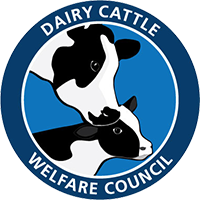Dairy Cattle Welfare Symposium
 Last week I was invited to present at the 2016 Dairy Cattle Welfare Symposium: Intersection of Best Practices and Sustainability, held at the Ohio State University.
Last week I was invited to present at the 2016 Dairy Cattle Welfare Symposium: Intersection of Best Practices and Sustainability, held at the Ohio State University.
It was a very full and exciting two days of discussions about topics such as welfare assessment programs, lameness, pain management, calf rearing, and antibiotic use, as well as dairy personnel training and consumer perception. One of the highlights was hearing several producers from different parts of the country share how they approach cow comfort on their exemplary farms.
I gave a talk with a message similar to when I spoke at the Managing Cow Comfort in Hot Weather seminar organized by U.C. Cooperative Extension last year.
How can a dairy producer determine whether the cows are getting cooled enough?
Rather than just checking the weather, I think it’s valuable to ask the cows how they are are doing. I talked about looking for signs such as high respiration rates and panting to identify when cows begin to experience heat stress, before milk production drops.
I shared the research I’ve done to determine how much water is needed to cool cows efficiently. Efficiency to me means maximizing cow comfort while minimizing potable water use. On one hand, enough water should be used to cool cows effectively. On the other hand, applying too much water leads to diminishing returns for cooling, and wastes this precious natural resource.
Checking how the cows are doing can help inform decisions about whether it would be beneficial to use more water to cool them effectively, or whether less water could potentially be used.
This article was posted in Uncategorized.